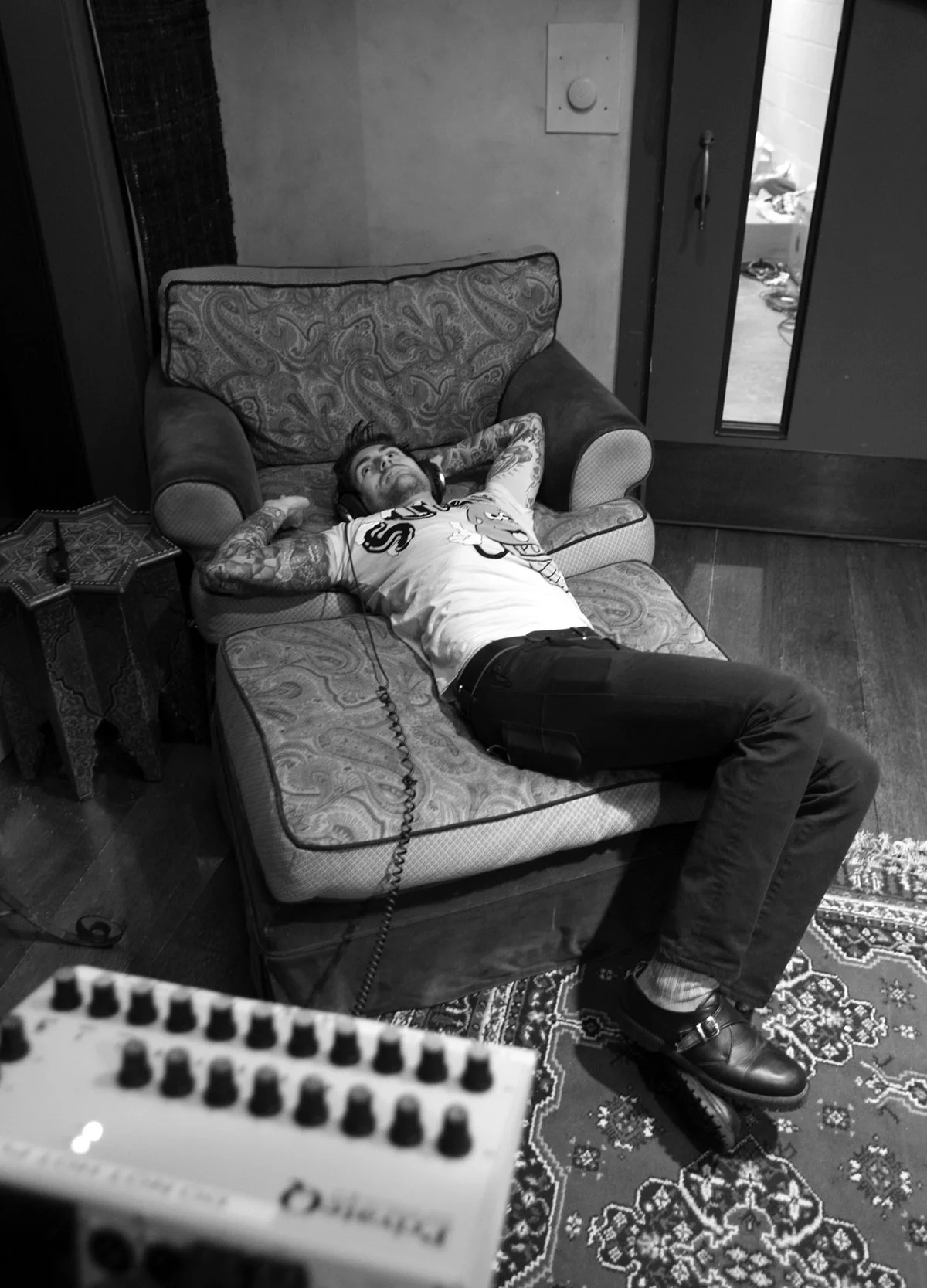
[](#)[](#)
Column: Photography
Camera Approaching Obscura
I came here to tell stories: to document artists, their lives onstage, offstage, in and out of the public eye. The way Jim Marshall did. Had it been 50 years ago when the call went out, it would’ve been Jim Marshall to answer the phone. But it’s 2013, Jim is gone. And whoever gets the call today answers to a very different beast.
The relationship between musicians and the media has changed. Once upon a point in time, musicians trusted the media—there’s pictures to prove it. They let us in. That rapport produced a canon of work that defined the era, its people, and its ideas. Janis Joplin crumbles into a couch with a bottle of Southern Comfort between her legs. Keith Richards composes a song backstage with pen and pad, leaning on an amp. Bob Dylan rolls a tire down the streets of Greenwich Village, for why, who knows. Marshall’s photographs belted the unrestrained ballads of rock and roll; what was onstage, offstage, on the bus, on a bender, off the rails, in the gutter, because that was the thing itself. Joplin said of her SoCo photo: “Jim, this is how it is sometimes: lousy.” It was a matter of trust. But that’s changed.
The publicity machine needs artists to look camera-ready perfect. It doesn’t want blood, sweat, and tears. Media let the doors swing wide for the paparazzi, the weeklies, and the tabloids. It made a game of making celebrities look stupid. It gave publicists reason to fear. So they built their castle walls higher, created untouchable uber-celebs and made the public hungry, made the paparazzi work harder for unauthorized images, for secrets, forced them to find new ways to scale fences, sent the machine running to block the last remaining entrance. Wash, rinse, repeat.
Today, the machine can only control what it can, and it will, just in order to do something to stem the tide. So credentialed photographers on assignment are shuffled out of concerts after a few songs, while the entire audience records every moment on their phone. As photographers pack their gear, the front row remains stocked with paparazzi that spent thousands for a ticket and access to the shot. It’s a recipe with a taste for disaster. Beyoncé falls down and YouTube lights up. What story is that telling? Who wants to hear it? Put your phones away. Enjoy the show. You’re blocking the view.
I’ve been lucky. I shot Michael Jackson rehearsing, Gwen Stefani being a mom backstage, Dave Grohl in his studio. I collaborated with musicians on the way they want the world to see them, the way they see themselves, and whatever’s in between. I sat with Bob Dylan in a small studio in Santa Monica, just the two of us at a kitchen table, reviewing photos for his last album. I saw a little of what might have been, what Jim Marshall answered to when his phone rang. It’s a trust thing, and there’s nothing like it.
A new era of artists and expression is here, musicians who haven’t known what a Jim Marshall could do. It’s a trust thing that could skip an entire generation, breeding a new kind of intimacy, one that’s crafted and perfected and careful. Maybe at it’s best, if we look hard enough, it’ll tell a different kind of truth, a chronicle of war: the machine versus the world.
In the meantime, or whenever I can manage, it’ll be kitchen tables, musicians, their stories, and me, trying to find focus.
